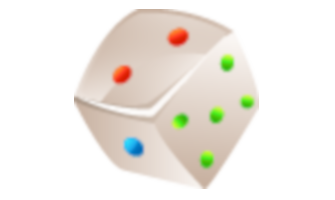Interactions among living things
Science, Grade 5
Interactions among living things
Study Guide

Interactions among living things
Flash Cards

Interactions among living things
Quiz

Interactions among living things
Worksheets

Interactions among living things
Games

Study Guide Interactions among living things Science, Grade 5
❮
1
/
3
❯
INTERACTIONS AMONG LIVING THINGS The Flow of Energy An important and essential interaction among living things involves the flow of energy within an environment. ALL living organisms need energy to survive! Energy moves (or flows) through an environment through food chains and food webs. Food Chains The following is an example of a food chain: What do the arrows represent in a food chain? The arrows shown on food chains and webs represent the flow of energy between organisms. For land animals, all food chains usually begin with plants. For ocean animals, food chains usually begin with a microorganism (an organism that is too small to see with our eyes alone) called plankton. Plankton is plant-like. © Copyright NewPath Learning. All Rights Reserved. Permission is granted for the purchaser to print copies for non-commercial educational purposes only. Visit us at www.NewPathLearning.com.
Food Webs A food web consists of many food chains that overlap each other in an environment. This is because not all animals eat the same, exact thing all the time. If animals did eat the same food, relying on a single food chain, their survival could be threatened if something happened to that one food source. Food webs and food chains include several key players: Producers – which are plants - they are organisms that make their own food and get their energy from the Sun. Consumers – those organisms who can’t make their own food and obtain energy by eating other organisms (all animals happen to be consumers). Consumers include several specific groups of organisms: • Herbivores – organisms that only eat plants • Carnivores – organisms that only eat other animals • Omnivores – organisms that eat both plants and other animals, and • Decomposers – organisms that eat dead plants and animals and waste. Animal Competition We are not talking about Animal Olympics here. We are talking about animals competing for their LIVES! Organisms compete for several reasons. They compete for important resources such as food, water, and space. When resources are limited, competition among organisms increases. Animal Interactions Animals interact with each other, sometimes for the good, other times for the not so good…. What is symbiosis? Symbiosis is the long-term relationship between two or more different organisms that may benefit each member, may benefit only one member, or may harm one organism while the other benefits. Different forms of symbiosis: Commensalism is the relationships between members of two different species, in which one organism is benefited while the other organism is neither harmed nor benefited in any way. An example of commensalism is a bird nest in a tree (the bird gets a place to live and the tree doesn’t get hurt and doesn’t benefit from the bird). © Copyright NewPath Learning. All Rights Reserved. Permission is granted for the purchaser to print copies for non-commercial educational purposes only. Visit us at www.NewPathLearning.com.
Parasitism is the relationship between two different organisms in which one organism lives in or on another organism and benefits greatly while causing harm to the organism it is living on or in. A parasite is an organism that feeds off another organism. The organism that a parasite feeds off of is called a host. An example of parasitism is a tapeworm living inside a dog. Mutualism is the relationship between two organisms in which BOTH organisms benefit. An example of mutualism is a bee and flower. A bee benefits from the flower by getting food in the form of nectar from the flower. The flower benefits because the bee aids the flower in the pollination process…so they both help each other. © Copyright NewPath Learning. All Rights Reserved. Permission is granted for the purchaser to print copies for non-commercial educational purposes only. Visit us at www.NewPathLearning.com.
